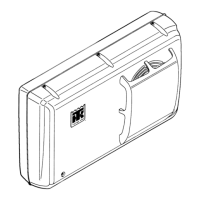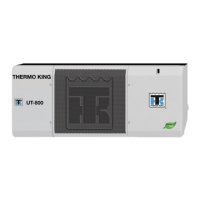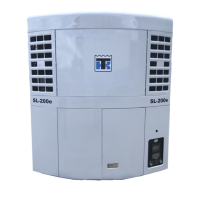Refrigeration Maintenance
45
Testing the Refrigerant Charge with a
Loaded Box
1. Install a gauge manifold.
2. Run the unit in cool on engine driven
compressor operation.
3. Cover the condenser to drive any excess
refrigerant from the condenser into the
receiver tank.
4. As the head pressure rises, check the liquid
line sight glass. There should be no bubbles in
the flow of refrigerant through the liquid line
sight glass. Bubbles in the refrigerant indicate
the unit is low on refrigerant. Refer to add
refrigerant.
NOTE: If no bubbles are present, there is
sufficient refrigerant in the unit for that load
at that particular box temperature. This test
does not determine if the unit contains a full
charge of refrigerant.
Checking Compressor Oil
Charge
The compressors are furnished with the amount of
oil shown in. The oil level in the compressor will
change after the compressor is initially run,
making any level measurements inaccurate.
To ensure an adequate oil supply, the following
procedure must be followed whenever the
refrigerant charge is lost or removed from a unit:
1. Install a compressor on the system having a
residual oil supply and self-lubricating system
such as a TK 214 model. Connect an oil
separator on the discharge or suction line to
collect and drain out circulated oil.
NOTE: A suction line oil separator can be
improvised by installing a suction filter
upside down in the suction line near the
compressor. Cap off both access ports, and
use the lower one to drain off the
accumulated oil.
2. Place a normal amount of oil in the cleanup
compressor before operating.
3. Charge with 6.0 to 7.0 lb (2.7 to 3.2 kg) of
refrigerant.
4. Operate at a low speed (600 to 800 rpm) for 2
hours, or until the compressor oil level reaches
a minimum allowable level, whichever occurs
first. Drain the collected oil from the oil
separator as it fills, taking care to not allow
any collected oil to recirculate.
5. Prepare the original compressor that was
removed from the unit (or a replacement) by
draining out any existing oil and replacing the
oil with the amount of oil shown in the
Specifications chapter.
6. Install the original compressor (or its
replacement), and proceed with the manual
evacuation and refrigerant charging
procedure.

